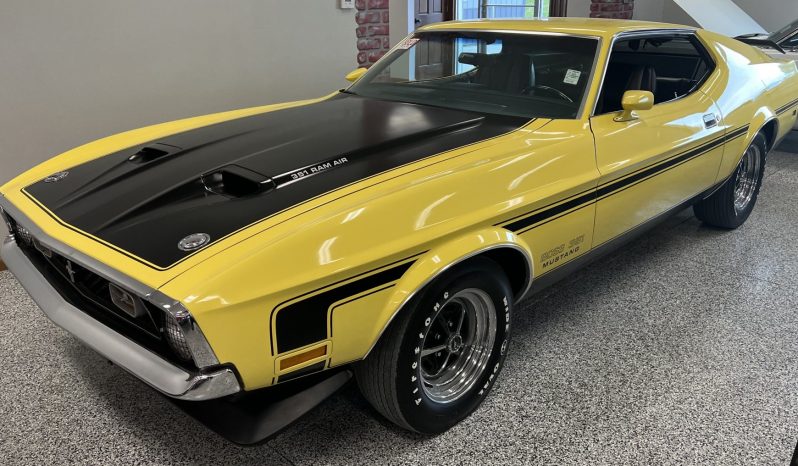The History of the Ford Mustang Muscle Car by Mike Savage of New Canaan, CT
The Ford Mustang, an automotive legend that has left an indelible mark on the American landscape, is not just a car; it's a symbol of freedom, power, and the unbridled spirit of the open road. Mike Savage, a devoted car enthusiast hailing from New Canaan, takes us on a journey through time, chronicling the captivating history of the Ford Mustang muscle car—a vehicle that transcends generations and continues to captivate automotive enthusiasts worldwide.
The Birth of an Icon: 1964-1966
Mike Savage begins the journey with the birth of the Ford Mustang in 1964. "The Mustang wasn't just a car; it was a revolution in the automotive industry," he states. Introduced as a compact, stylish, and affordable sporty car, the Mustang quickly captured the hearts of Americans and ignited a new era of performance and personalization.
"The 1965 Ford Mustang, often referred to as the '1964½' model, was an instant sensation," Savage notes. "It was introduced at the New York World's Fair on April 17, 1964, and within a short span, it became a cultural phenomenon."
Evolution of the Pony Car: 1967-1973
As the Mustang entered its second generation in 1967, it underwent significant changes in design and performance. "The '67 Mustang featured a longer body, a more aggressive stance, and powerful engine options that appealed to a broader range of enthusiasts," Savage explains.
During this period, Ford introduced high-performance variants, including the iconic Shelby GT350 and GT500, collaborating with Carroll Shelby to create thoroughbred Mustangs that pushed the boundaries of speed and style.
The Mustang continued to evolve through the 1970s, adapting to changing regulations and consumer preferences. The introduction of the Mach 1 and Boss 302 solidified the Mustang's reputation as a force to be reckoned with on the track and the street.
Challenges and Rebirth: 1974-1993
The 1970s posed challenges for the automotive industry, with fuel shortages and emissions regulations impacting performance-oriented vehicles. "During this era, the Mustang went through transformations to align with changing times," Savage remarks. "While it faced some challenges in terms of performance, the spirit of the Mustang endured."
The iconic "Fox Body" Mustang emerged in 1979, signaling a rebirth of the model's performance capabilities. "With a lightweight design and a renewed focus on handling and agility, the Fox Body Mustang set the stage for the muscle car renaissance of the 1980s," Savage notes.
Muscle Car Renaissance: 1994-2004
The 1994 debut of the fourth-generation Mustang marked a return to form for the iconic model. "The '94 Mustang embraced a retro-inspired design, paying homage to the classic styling cues of the original pony car," Savage explains. "It was an era of rejuvenation for the Mustang, with a renewed emphasis on performance and an expanded lineup, including the high-performance SVT Cobra."
During this period, the introduction of the SN-95 platform in 1999 continued to solidify the Mustang's position as a modern muscle car. Savage highlights the Bullitt edition Mustang, inspired by the classic Steve McQueen film, as a standout model that celebrated the Mustang's heritage.
Sleek and Powerful: 2005-Present
The fifth-generation Mustang, introduced in 2005, brought a bold and modern design to the forefront. "This era witnessed the return of the Mustang GT with a 4.6L V8 engine, harking back to the roots of the muscle car," Savage remarks. "The retro-inspired styling resonated with enthusiasts, and the Mustang regained its status as an icon of American performance."
Ford continued to push the boundaries with the introduction of the Shelby GT500 in 2007, featuring a supercharged V8 engine that delivered exhilarating power. Subsequent iterations of the Mustang, including the sixth and current generation introduced in 2015, have embraced contemporary design, advanced technology, and formidable performance.
Shelby Legacy and Beyond: A Legacy of Performance
Mike Savage emphasizes the integral role played by Shelby Mustangs in shaping the Mustang's legacy. "Carroll Shelby's collaboration with Ford resulted in some of the most revered and sought-after Mustangs in history," he states. "From the GT350 to the supercharged GT500, Shelby Mustangs have consistently pushed the envelope of performance, embodying the essence of American muscle."
The Shelby legacy continues to thrive, with modern iterations of the Shelby GT350 and GT500 setting new benchmarks for power, speed, and track capability.
Mike Savage's Perspective: A Personal Connection
As a resident of New Canaan and a passionate car collector, Mike Savage shares his personal connection to the Ford Mustang. "The Mustang has been a constant presence in my garage," he reveals. "Each model, from the classic '60s variants to the modern Shelby Mustangs, holds a special place in my collection. The Mustang's evolution reflects not just changes in automotive design but also the evolving tastes and desires of enthusiasts."
Savage underscores the Mustang's enduring appeal, stating, "It's a car that transcends generations, inviting people of all ages to experience the thrill of driving a true American icon."
In Conclusion: The Mustang's Unstoppable Gallop
In chronicling the history of the Ford Mustang muscle car, Mike Savage captures the essence of a vehicle that has not only weathered the changing tides of the automotive industry but has emerged stronger with each evolution. "The Mustang is not just a car; it's a symbol of American freedom, power, and the joy of the open road," Savage concludes. "Its story is one of resilience, innovation, and an unwavering commitment to delivering an unmatched driving experience. The Mustang's gallop continues to resonate with enthusiasts, ensuring its place in the pantheon of automotive greatness."





Comments